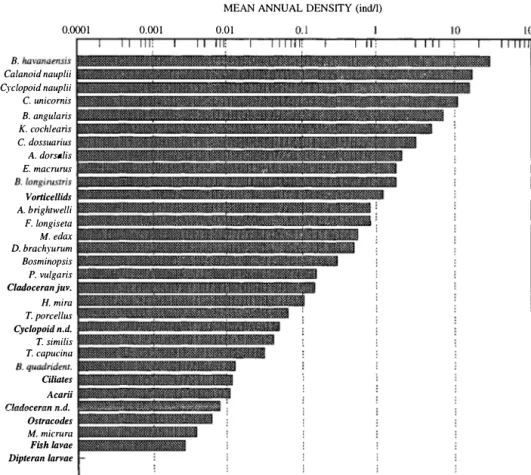Species composition, abundance and distribution of zooplankton in a tropical eutrophic lake: Lake Catemaco, México
Texto completo
Figure




Documento similar
(2015) conducted spatial surveys of zooplankton communities in Lake My´vatn and found that the pelagic zooplankton community showed strong spatial variation, with species
The pelagic zooplankton community showed strong spatial structure (spatial autocorrelation), with species composition varying with spatial variation in chlorophyll-a, the abundance
Mycobacterium caprae is the main cause of goat tubercu- losis (TB) in Spain [1] and has also been involved in TB outbreaks in other livestock and wildlife species in con- tact
The quantity and properties of fibres, affect the suitability of tree species and their genetic entries as a raw material for mechanical wood processing and pulp and paper
species are ecosystem type and altitude; some species tolerated evergreen forest and others prefer dry forest, in terms of elevation, in some species is limited from lowland to
Correlation between structural complexity, proportion of species included in the Red Lists at world and national level, proportion of threatened species included
The main objectives of this thesis were: (1) to investigate variations on bird abundance and species richness in the fields, with respect to past haying events
Zooplankton abundance, species richness, diversity, and assemblage composition 23.. differed significantly among treatments, and post-inundation temperature and pH